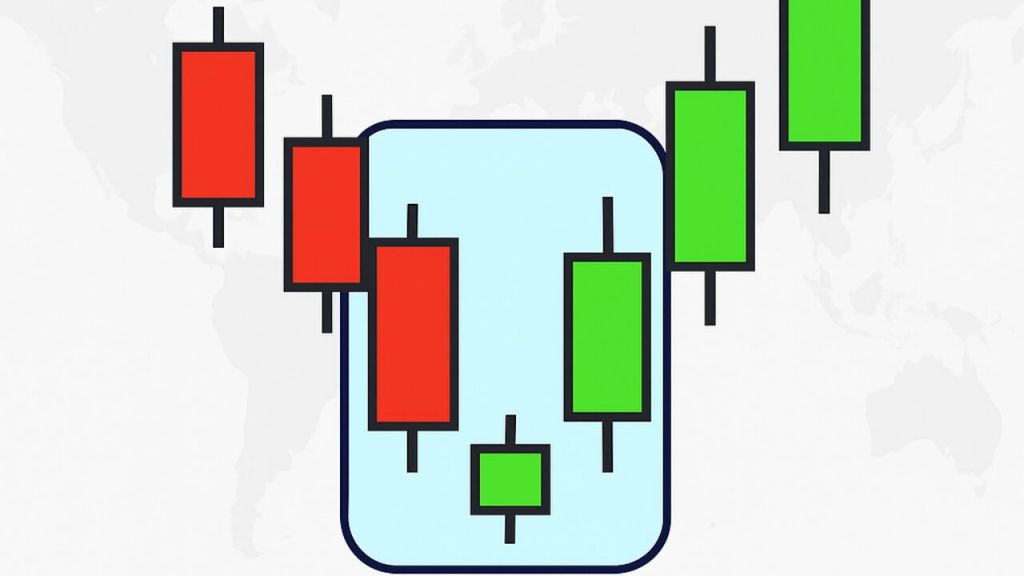Many aspiring traders ask how to spot a reliable reversal signal when the market appears locked in a downward trend. In such situations, the morning star candlestick pattern often emerges as a beacon of hope, indicating a potential bullish market turnaround. This star candlestick formation—known for its three candles—serves as a trend reversal indicator in technical analysis, helping traders capture opportunities as the market shifts from strong selling pressure to increased buying pressure.
Below is a guide covering both the fundamentals and additional details, such as the right entry point for morning star, how volume confirmation plays a role, and how to avoid false signals.
Understanding the Morning Star Candlestick Pattern

The morning star pattern is a triple candlestick pattern that suggests an upward reversal in price. It’s often viewed as a bullish reversal pattern, especially when the morning star appears at a key support level after a pronounced downtrend reversal. Traders typically look for three main candles:
- First Candlestick: The “Black Candle” Continuing the Downtrend
- Often called the first candle, it’s typically a long red candle (or black, depending on chart colors) that extends the existing downward trend.
- This bearish candle closes near its low, showcasing strong selling pressure and a potential setup for a morning star forms scenario.
- The first candle’s body is usually larger, reflecting the continued bearish momentum.
- Second Candlestick: The “Small Bodied Second Candle”
- The middle candlestick can be a small candle or a doji candle, often reflecting market indecision.
- This small bodied candle may hover below or around the candle’s low of the first candle, yet it shows that sellers are losing steam.
- The small candlestick signals waning selling pressure and sets the stage for a potential reversal.
- Third Candlestick: The “Large Bullish Candlestick”
- The third candlestick is usually a strong bullish engulfing pattern (or at least a sizable green candle) that closes well above the midpoint of the first candle’s body.
- It confirms a change in sentiment as buying pressure intensifies.
- Morning star pattern bullish outcomes often rely on this third candle closing significantly into the real body of the first candlestick.
When the morning star pattern appears, it suggests a potential trend reversal from a bearish to a bullish phase. In forex trading, the stock market, and other charted assets, this three candle pattern often serves as a strong reversal signal, especially when combined with other technical indicators.
First Candle of the Morning Star
The first candlestick in the morning star is a long red candle that continues the existing downward trend. The size and color of this bearish candle emphasize that the market momentum is still pushing downward. This establishes the overall context for a potential morning star reversal pattern, as it shows persistent selling pressure right before the formation of the next two candles.
Third Candle of the Morning Star
While the small bodied second candle is crucial, the third candle is where the big shift happens. The third candlestick in the morning star should ideally gap above the second candle and close at least halfway into the body of the first candlestick. This visually underscores a definitive upward reversal. When the candle shows a clear push past the midpoint of the first candle’s body, it signals that buying pressure is strong enough to override prior losses.
Entry Point for the Morning Star
One of the most common questions involves exactly when to trade morning star signals. Often, traders typically enter long positions at the close of the third candle. By waiting until the third candlestick forms, the pattern provides more certainty that the market has pivoted away from its bearish state. However, some traders opt for a slightly more aggressive entry, jumping in as soon as the third candle shows significant strength above the middle candle.
Placing a stop loss below the lowest point of the second or third candle—often the candle with the candle’s low—is common practice to protect against false signals and unexpected price movement. Meanwhile, exit strategies vary, but many traders use previous resistance levels or a favored risk/reward ratio to lock in profits.
Volume Confirmation
An often-overlooked aspect of the morning star is volume data. High volume on the third day of the morning star formation is frequently viewed as additional confirmation that the bulls are taking control. In markets like stocks, futures, and forex (if volume data is available), a notable uptick in buying volume can reinforce the pattern’s validity. Volume spikes indicate that more participants are stepping in to support the emerging bullish market, further solidifying the idea that the morning star pattern might kick off a sustained price trend higher.
Reliability of the Morning Star
The morning star candlestick is widely considered a reliable reversal signal, especially when accompanied by technical confirmation. For instance, MACD line crosses above the signal line, or a confluence of other technical indicators, can reduce the risk of market indecision creating false signals. Traders also watch for alignment with a key support level, previous pivot zones, and tool-based overlays like moving average convergence divergence to bolster confidence in the setup. In essence, the morning star is a dependable clue that an uptrend reversal may be underway, but prudent traders still verify the formation with candlestick signals and supportive metrics.
Comparisons with the Evening Star Pattern
It’s helpful to note that the evening star pattern is the bearish counterpart of the morning star. Whereas the morning star signals an upward reversal, the evening star warns of a downtrend reversal. Both patterns illustrate a three candlesticks formation but head in opposite directions. Evening star pattern watchers spot a weakening bullish trend, with the final candle often being a large, black candle that closes into the first candle’s body from the opposite side.
Final Thoughts and Best Practices
- Combine Multiple Signals
While the morning star reversal pattern stands strong on its own, consider using other candlestick patterns and other technical indicators like RSI or moving average convergence divergence to confirm your thesis. - Pay Attention to Volume
Surging volume on the third day can be a telltale sign of genuine bullish momentum. High volume mitigates the risk of entering into a false signals trap. - Practice Sound Risk Management
Place a conservative stop loss below the small bodied candle (the second or third candle) and stick to a well-thought-out trading strategy. This approach helps avoid large losses in case the pattern fails. - Mind the Bigger Picture
The morning star tends to be more reliable when it aligns with a broader technical analysis approach, such as identifying a key support level or observing a macd line crosses scenario. - Adapting to Different Markets
Whether in forex trading, the stock market, or other charted instruments, the pattern represents a beacon of hope in a relentlessly downward trend, provided it forms with clear three candles and robust follow-through.
When all these factors align, the morning star candlestick pattern can be a potent ally for those seeking a bullish reversal pattern. It unites a large bullish candlestick with a small bodied second candle in a setup that effectively broadcasts a potential trend reversal. With a dash of patience and a solid understanding of candlestick signals, many participants find that trading the morning star can be both manageable and rewarding. By recognizing its nuances—first candle’s deep dive, the second candle’s pause in momentum, and the third candle’s triumphant rally—traders can better time entries, set appropriate stop losses, and ride the wave of an upward reversal with greater confidence.

Frequently Asked Questions
Q. Is a morning star bullish or bearish?
A: A morning star is generally a bullish reversal pattern. It signals a potential shift from a downward trend to a more positive, bullish market outlook, especially when the third candle closes significantly above the midpoint of the first candlestick.
Q. How accurate is the morning star pattern?
A: Many traders consider the morning star quite reliable as a reversal signal, particularly when it forms near a key support level and is confirmed by technical indicators like volume spikes or moving averages. That said, no candlestick formation is 100% accurate, and combining signals—such as watching MACD line crosses—helps filter out false signals.
Q. What are the rules for morning star?
A: The morning star pattern typically follows three main rules:
- A long bearish candle continues the prior downtrend.
- A small bodied candle or doji candle follows, often indicating market indecision.
- A large bullish candlestick closes at least halfway into the first candle’s real body, confirming a potential trend reversal.
Q. What is the most successful candlestick pattern?
A: Many traders gravitate toward engulfing patterns (both bullish and bearish), hammer and shooting star formations, and of course, the morning star and evening star patterns. Each can be highly successful in the right context. Factors like market conditions, volume confirmation, and additional technical analysis signals play a major role in a pattern’s effectiveness.

Disclaimer
Trading involves high risk, and retail investor accounts can lose money rapidly due to leverage. This article is for educational purposes only and should not be considered financial advice. Always do your own research and consider your financial situation before making any investment decisions. Effective risk management is essential in Forex trading to protect your capital and manage risk appropriately.





